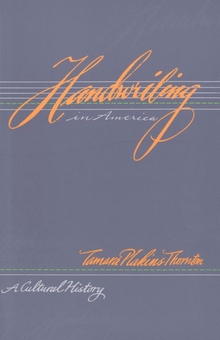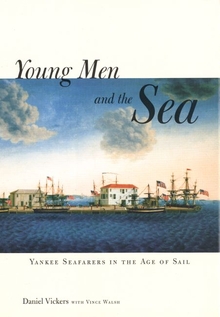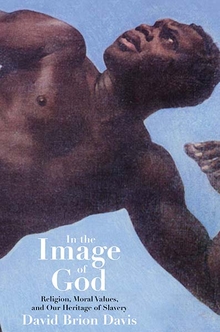Handwriting in America
WARNING
You are viewing an older version of the Yalebooks website. Please visit out new website with more updated information and a better user experience: https://www.yalebooks.com
A Cultural History
Tamara Plakins Thornton
Script emerged in the eighteenth century as a medium intimately associated with the self, says Thornton, in contrast to the impersonality of print. But thereafter, just what kind of self would be defined or revealed in script was debated in the context of changing economic and social realities, definitions of manhood and womanhood, and concepts of mind and body. Thornton details the parties to these disputes: writing masters who used penmanship training to form and discipline character; scientific experts who chalked up variations in script to mere physiological idiosyncrasy; and autograph collectors and handwriting analysts who celebrated signatures that broke copybook rules as marks of personality, revealing the uniqueness of the self. In our time, concludes Thornton, when handwriting skills seem altogether obsolete, calligraphy revivals and calls for old-fashioned penmanship training reflect nostalgia and the rejection of modernity.
"This elegant study again proves that, in the right hands, a narrow topic is an excellent window into broad issues of social structure, education and popular culture. Historian Thornton not only packs plenty of Americana into her history of handwriting but also relates trends in this country to European developments. . . . Thornton's high-quality scholarship will satisfy exacting academic audiences, and her graceful prose will charm and entertain the general reader."—Publishers Weekly
"Filled with interesting and sometimes corrective information about penmanship and its prejudices. . . . Thornton writes with a measured grace."—Thomas Mallon, New Yorker
"Remarkable. . . . Thornton writes what may be the first cultural history of penmanship. Dissecting its nuances, variations and implications, she teaches us what any penmanship master worth his blotter knew until recently; there is nothing trivial about the ways in which we shape our letters."—Edward Rothstein, New York Times
"[Thornton's] book, a swift and arresting history of handwriting, shows that the growing ubiquity of print lent handwriting meaning beyond the words it recorded. . . . In reading this wonderful book, I became completely convinced that handwriting, as Thornton maintains, is not only 'a phenomenon that reflects changing conceptions of self,' but is 'one of the places where the self happened.'"—Katherine A. Powers, Boston Sunday Globe
"Thornton. . . provides an amply illustrated study in which the student/scholar, along with the non specialist, will be introduced to the art and mystery of graphology and its cultural character."—Come-All-Ye
"In this fascinating study, which ranges from colonial copybooks to the computer and touches on such topics as the Palmer method, handwriting analysis, forgery, autograph collecting and the revival of calligraphy, the historian Tamara Plakins Thornton reveals much about social realities and cultural attitudes."—American Craft
"Thornton has penned in elegant style a volume that both enriches the intellect and satisfies the aesthetic palate. Her subject is handwriting, her period the past three centuries, and her study a wide-ranging investigation of handwriting's cultural roles and meanings. . . .This book brims with insightful analysis. . . . Thornton's prose pleases greatly; the book is a reader's joy. Mellifluous, precise, a ready mot juste at every turn, her writing tells her tale with strong images and effortless clarity. . . . Thornton's gifts as scribe and word painter are exceptional."—John Boli, American Journal of Sociology
"Tamara Plakins Thornton has produced an entertaining and gracefully written history of handwriting in America, tracing its development from the earliest colonial time into the twentieth century. . ."—John Greppin, Times Literary Supplement
"Thornton offers a thoughtful and stimulating cultural study of handwriting in America from the colonial period through the 20th century."—Konstantin Dierks, History of Reading News
"This book provides historians of literacy with an extraordinarily useful supplement to standard 'histories of the book.' Though we have many studies of medieval and renaissance paleography, this is the first study of what happens to handwriting in the wake of printing."—Douglas Patey, Smith College
"An important, arresting book."—Michael P. Kramer, Journal of the Early Republic
"[Thornton’s] book is not only informative but also compelling."—David Nicholson, Washington Post Book World
"After reading Handwriting in America, one will never look at a handwritten page the same way."—Shari Rudavsky, Isis
"Readers of Thorton's well-crafted study will find much beyond the foregoing, including histories of the rising acceptance of expert testimony in court cases involving disputed handwriting, of autograph collecting, and of the pedagogical and psychological debate over whether left-handed children should be forced to write right handed. What has threaded all of this together, she shows, has been American's continuing quest for diversity amid social and cultural pressures for uniformity."—Joseph F. Kett, American Historical Review
"For historians and others in psychology, the book enlightens concerning changes in the hinging of outer to inner worlds, including deception, as well as concerning notions of habit formation, mechanizing the body, and sex differences. . . . This exceptional book will be welcomed by scholars and students in many disciplines, including psychology, history, cultural studies, sociology, American studies, and women’s and men’s studies."—Betty M. Bayer, Journal of the History of the Behavioral Sciences
"Thornton’s book will be of interest to historians because it adds a new dimension to the growing body of work on literacy in America. Educators will find new perspectives on ‘ordinary’ classroom practices and teachers such as Platt Rogers Spencer, Louise Rice, and Austin Norman Palmer. . . . General readers will not be put off by the solid scholarship of this book because it is written in such a clear and engaging style."—Anne Ruggles Gere, Journal of American History
Publication Date: May 25, 1998
57 b/w illus.






